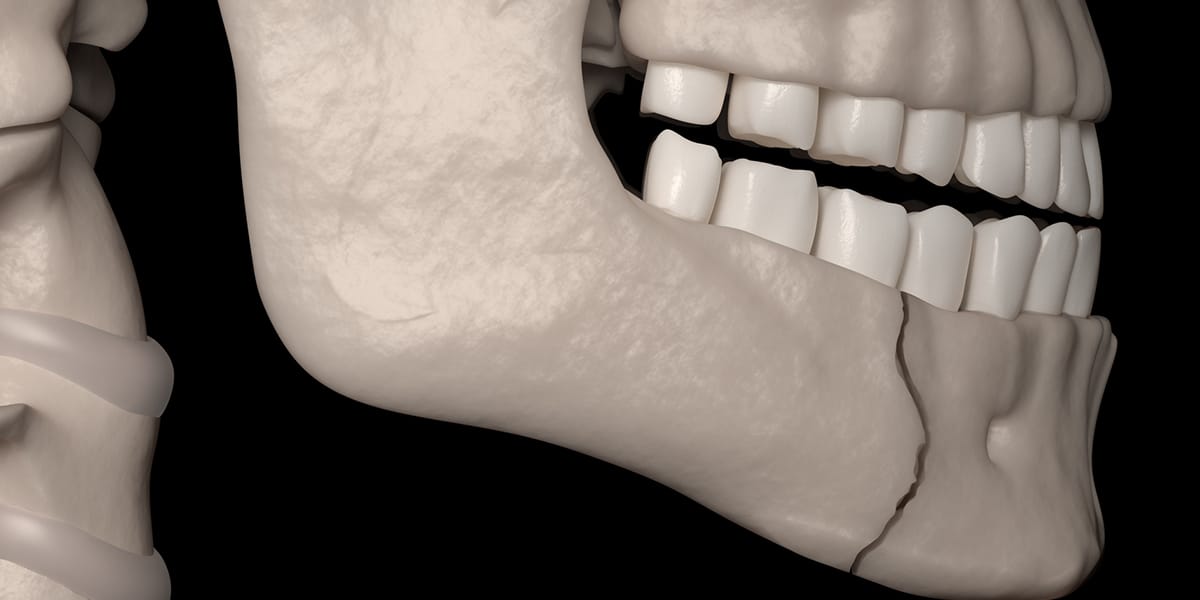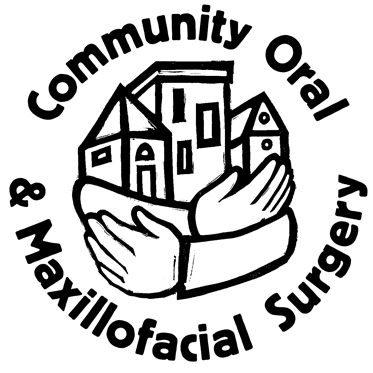Facial Trauma Specialist in Milwaukee, WI

As one of the first things people notice about you, your face is integral to your appearance. Behind its exterior lies a complex bone structure that allows you to breathe, eat, and speak. If there is severe impact or injury to the face, these delicate bones and structures may require evaluation and repair by a team skilled in understanding and managing facial trauma.
Dr. Ruba Khader understands the complex nature of facial trauma. At Community Oral and Maxillofacial Surgery, we have the necessary tools to diagnose and treat injuries to the face, mouth, and teeth.
What Is Facial Trauma?
Facial trauma is a comprehensive term that refers to injuries to the soft tissue or bones of the face. The face contains several delicate structures and tissues essential to your physical appearance and many vital functions. Therefore, a facial trauma specialist must treat any injury or damage you sustain to the face as soon as possible.
What Causes Facial Trauma?
There are many sources of facial trauma, including:
- Motor vehicle accidents
- Gunshot wounds
- Falls
- Burns
- Workplace accidents
- Fights
- Animal attacks
- Sports injuries
Types of Facial Trauma
Because your face contains many different structures, trauma can manifest in various ways, such as:
Soft Tissue Trauma:
Soft tissue trauma in the face can manifest as abrasions (scrapes on the skin), burns, contusions (bruising), or lacerations (cuts). More complex forms of soft tissue trauma are called avulsions- those occur when areas of the skin are lost due to the trauma requiring some sort of a reconstruction effort either immediately or in a delayed fashion. Some of these injuries require monitoring and minor care such as avoiding direct sun exposure, using sunblock, and massages. Others may require significant repair in an operating room setting.
Soft tissue injuries in the face could heal with scarring. It is therefore recommended that these are repaired by a facial trauma specialist. Injuries in the neck should be evaluated by a specialized trauma team in a trauma hospital whenever possible due to proximity to vital structures.
Facial Bone Trauma
Contrary to what some may believe, the skull isn't a single bone that sits in one piece. Instead, it is an amalgamation of 22 different bones, 14 of which make up your face. Trauma can affect one or many of these facial bones. Even bones that aren't damaged can be impaired by bones that have been fractured.
Facial bone fractures tend to be minor and do not affect your quality of life. But, more severe cases exist where fractured bones can affect the facial appearance, function including chewing and speech, and in some instances, breathing.
Dental Injuries
Facial trauma could manifest as injuries to the mouth, which could lead to tooth damage. In minor cases, this damage presents as cracks or chips in the enamel of the teeth. More severe injuries may cause broken or knocked-out teeth, bleeding, or bruising of the soft tissue in the mouth.
Facial Trauma Treatment
It's vital to seek immediate medical attention if you suffer facial trauma. Treatment for these injuries will vary depending on the nature and severity of the trauma.
All treatment begins with a thorough trauma evaluation. At the same time, medical professionals will work to stop any bleeding, alleviate swelling, and manage any effects the injury may have had on a person's airway, brain, or vision. Because facial injuries, particularly blunt force trauma, could be associated with head trauma, one of the top priorities is to check for signs of neurological problems such as confusion, memory lapses, uneven pupils, or cerebrospinal fluid leaks from the nose or ears.
Dr. Khader will ask questions about how the injury occurred as well as presenting symptoms before performing a physical exam. The exam is geared to identify any fractures, soft tissue injuries, hidden areas or bleeding or missing teeth.
To further confirm the tentative diagnosis, Dr. Khader will use computerized tomography (CT scans) to view all facial structuers including facial bones, soft tissues (as much as possible), and blood vessels. . Additional images can be ordered according to the type of injury.
Soft tissue damage such as lacerations to the skin, muscles, nerves, or glands may warrant reconstructive surgery. These injuries need to be addressed swiftly to prevent permanent damage. A qualified surgeon with experience in facial trauma and reconstruction can help a patient achieve the best possible results with treatment.
Facial fractures are often minor, only requiring observation and a follow-up with a facial trauma doctor. Sometimes, bone fractures require treatment, however. This treatment may consist of closed or open reduction. A closed reduction is similar to a cast and involves bringing the teeth together and using wires or heavy rubber bands to prevent the movement of the bony fragments. Open reduction (with or without fixation) requires opening of the bony edges surgically and bringing those together (w or without placement of plates and screws across the affected areas). Complex fractures may call for surgical reconstruction of the face.
A trauma dentist can help repair cracked or broken teeth. Some solutions for these issues include crowns, dental implants, bridges, and dentures.
What Can Happen If Facial Trauma Treatment is Delayed?
Bones and muscles require time and proper attention to heal. Though they can heal independently, they require medical guidance to heal in a way that doesn't alter your quality of life. If you allow facial trauma to go without proper treatment, you may experience:
- Pain
- Nerve damage that causes tingling or numbness
- Alterations to the way your jaws fit together that makes eating or breathing more difficult
- Impairment of your motor functions, such as blinking, smiling, moving your eyes, or opening your mouth
- Changes in your facial appearance, such as scarring, swelling, or asymmetry in your features
What Does the Rehabilitation Process Look Like After Facial Trauma Treatment?
The rehabilitation process following facial trauma treatment is essential for restoring both function and appearance. Initially, patients may need to manage swelling and pain through prescribed medications and cold compresses. As healing progresses, physical therapy might be recommended to regain strength and mobility in the facial muscles and joints. Gentle exercises can help improve functions such as chewing, speaking, and facial expressions. Additionally, patients might need to attend follow-up appointments to monitor healing and ensure that bones and tissues are aligning correctly. For those with extensive injuries, further reconstructive surgeries may be necessary. Throughout the rehabilitation journey, support from medical professionals and adherence to their guidance are crucial for achieving optimal recovery outcomes.
How Have New Technologies Improved Outcomes for Patients with Facial Injuries?
Advancements in technology have significantly enhanced the outcomes for patients with facial injuries. Modern imaging techniques, such as high-resolution CT scans, allow for precise diagnosis and detailed planning of surgical interventions. These tools enable surgeons to visualize intricate bone structures and soft tissues, ensuring accurate treatment of complex injuries. Additionally, the development of 3D printing technology has revolutionized reconstructive surgery, allowing for the creation of custom implants and prosthetics that perfectly fit a patient's anatomy. Minimally invasive surgical techniques, aided by advanced surgical instruments, have reduced recovery times and minimized scarring. These technological innovations have collectively improved the precision, effectiveness, and overall success rates of facial trauma treatments.
What Should You Do Immediately After Experiencing Facial Trauma?
Immediate action after experiencing facial trauma is crucial to minimize complications and promote effective treatment. First and foremost, assess the severity of the injury. If there is significant bleeding, swelling, or difficulty breathing, seek emergency medical attention right away. Apply a clean cloth or bandage to control any bleeding and use a cold compress to reduce swelling. Avoid moving the injured area to prevent further damage. If teeth are knocked out or fractured, try to preserve the fragments and bring them to your medical appointment. It is also important to stay calm and avoid food or drink (may need to be fasting in preparation for surgery). Prompt medical evaluation by a facial trauma specialist is essential to accurately diagnose and begin appropriate treatment.
Facial Trauma Treatment at Community Oral and Maxillofacial Surgery
Dr. Ruba Khader and the Community Oral and Maxillofacial Surgery team believe in treating every patient with compassion and understanding. Facial trauma can be a challenging condition to deal with, and we work hard to restore both the functions and aesthetics of patients' faces. Our team has years of experience with facial trauma and is fully equipped to treat chronic and acute facial trauma.
Please get in touch with us if you have any questions or would like to schedule an appointment.
